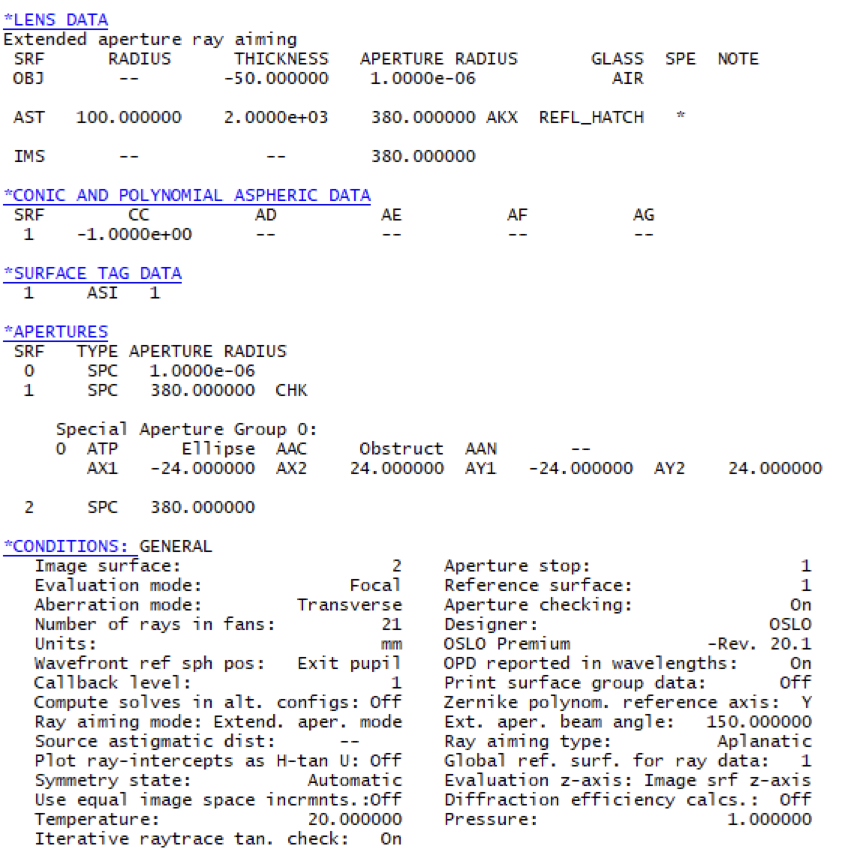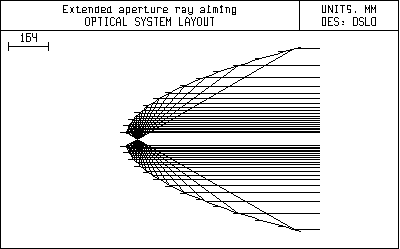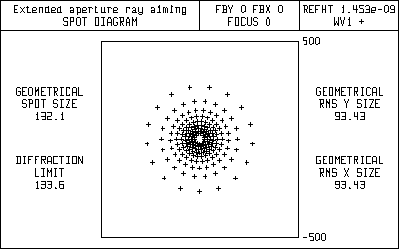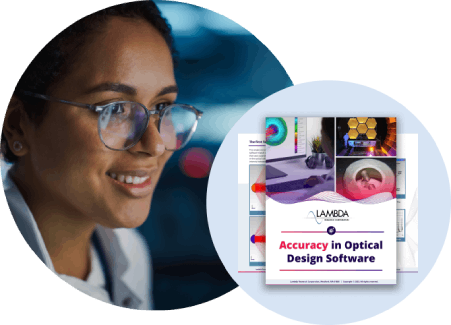XARMDEMO.LEN - AN EXTENDED APERTURE PARABOLA
Xarmdemo is a system that captures light over more than a hemisphere. It shows the use of extended-aperture ray-aiming mode to model a point light source for this application. It is instructive to use OSLO's interactive design windows to study the effects of moving the source. An increasing number of optical systems require ray tracing beyond 90 degrees. The nikofish.len example shows how OSLO accommodates optical systems that have a field of view greater than 90 degrees. This example shows how OSLO accommodates optical systems that have an aperture greater than 90 degrees. Often, such systems are found in illumination applications where high-quality image formation is not required, such as the design of luminaires or light collectors. The general operating condition xarm (extended aperture ray aiming mode) sets up a system of fractional aperture coordinates based on a maximum beam angle (xaba), measured relative to the positive z-axis at the object surface. When xarm is on, fractional coordinates are measured similarly to the tilt angles tla and tlb. A fractional coordinate of +1.0 corresponds to a ray angle equal to xaba above the z-axis, and a fractional coordinate of -1.0 corresponds to a ray angle equal to xaba below the z-axis. Extended aperture ray aiming is limited to tracing single rays and computing spot diagrams. There is no reference ray, so analyses such as ray fans have no meaning. The figure below shows a parabolic mirror used in conjunction with extended aperture ray tracing. Since the mirror is to the left of the object, it must be an alternate intersection surface. Note that the mirror has a central obstruction to block rays. 



